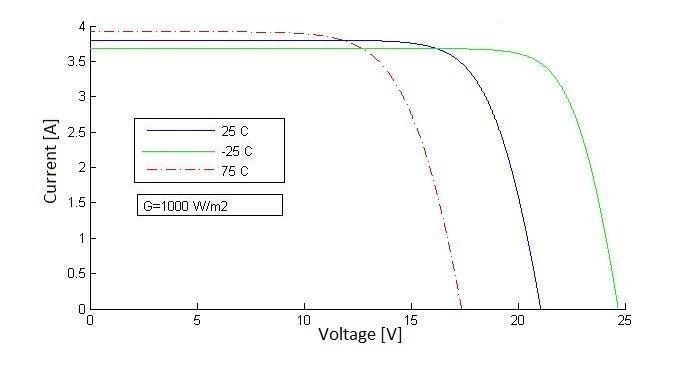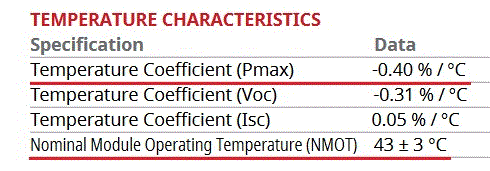Temperature has an effect the efficiency and maximum pv output of a solar panel.
Does the solar panel coeffiecent increase with colder temperatures.
The hotter a panel gets the less power it generates the ambient temperature temperature coefficient of the actual panel and the type of installation are all factors that affect the yield potential of a solar power system.
The positive effects of low temperatures on solar panel power production in colder climates can be countered by clouds and snow that decrease solar panel efficiency.
The effect of temperature on solar panel performance.
What might be somewhat surprising though is that solar panels actually seem to be able to handle a bit more cold than a bit too much heat.
For example when the temperature coefficient is minus 0 5 percent it means that efficiency decreases by 0 5 percent for every degree above 25 c or every 33 8 degrees above 77 f.
How cold air affects your solar panels.
How hot do solar panels actually get.
The temperature coefficient tells us the rate of how much will solar panel efficiency drop when the temperature will rise by one degree celsius 33 8 f.
Your solar panel s temperature coefficient has to do with the influence that the panel s temperature has on its productivity.
So on a hot day when panel temperatures may reach 45 0 c a panel with a temperature coefficient of 0 5 would result in a maximum power output reduction of 10.
For example the temperature coefficient of a panasonic hit 330w n type 96 solar panel is 258 per 1 degree celsius.
Each type of solar cell has a different temperature coefficient is detailed below.
A hot solar panel vs.
In this post we will look at exactly what a solar panel s temperature coefficient is and whether or not you should focus on it when planning your project.
Cold ambient air can also affect your solar panel s output although not in the same fashion as warm air.
Inside a hot solar cell atoms vibrate at a faster rate than when the solar cell is cool.
So for every degree above 25 c the maximum power of the panasonic solar panel falls by 258 for every degree below it increases by 258.
A cold solar panel.
Install factors like how close the panels are installed to.
Homeowners who experience high temperatures during the summer can understand how their panels will respond by checking the temperature coefficient of their solar panel system.









